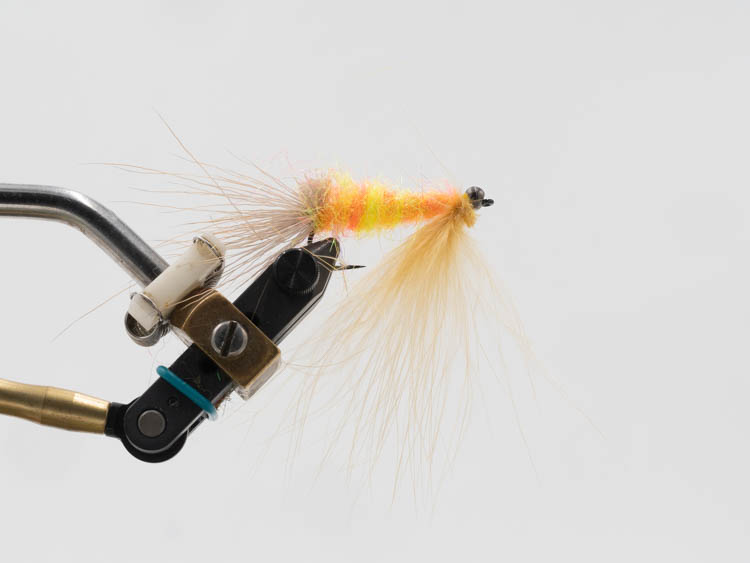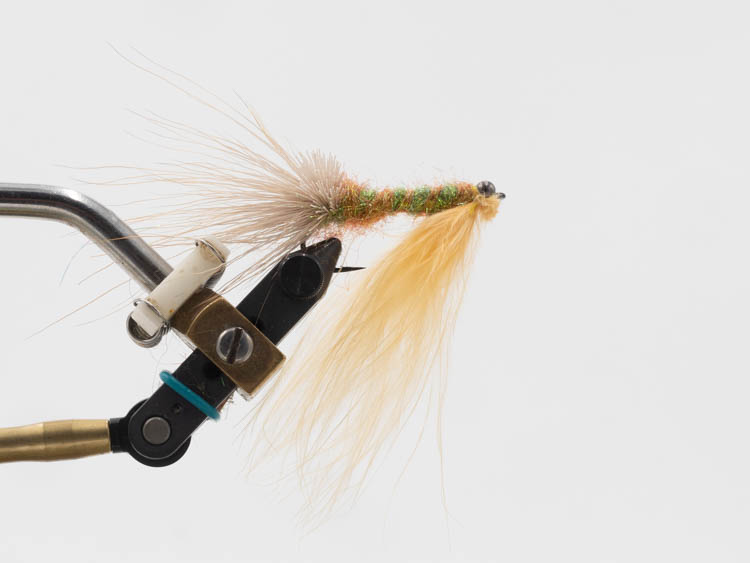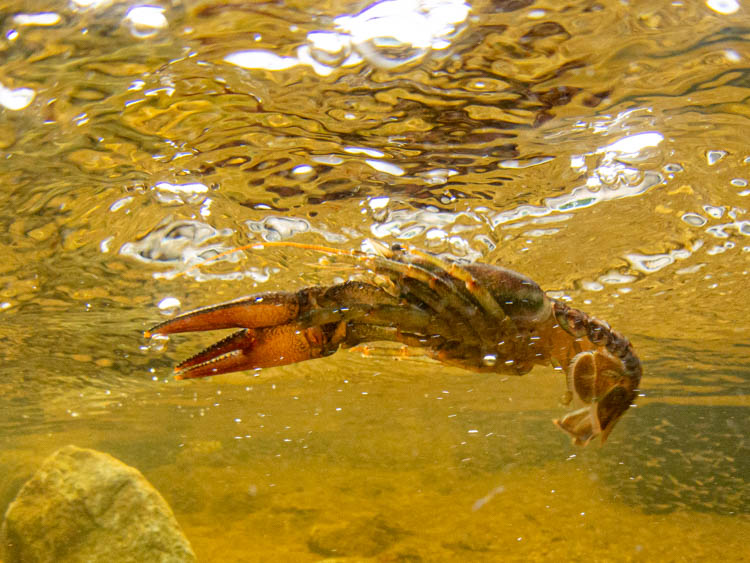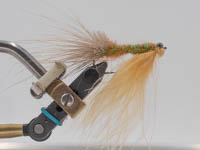Flight Risk Crayfish Pattern


These are the Materials used to tie the Flight Risk:
Hook: Size 1, 2, or 4 3xl streamer hook such as Daiichi 2461
Weight: Lead eyes or off center tungsten bead of your choice (this type of weight is needed to invert the hook)
Tail: Natural gray/brown deer body hair
Body: 1 or 2 colors of ice dub. For my fishing here, shrimp pink/yellow or olive/brown are a good combination, or just a solid color of olive.
Wing: tan or ginger marabou tuft
Tying Instructions for the Flight Risk:
- If you are using an oblong bead, move it up the shank and behind the eye. Lash it down tightly so that the heavy part of the bead causes the weight to be on top of the shank. Secure it with a drop of glue. I usually use normal viscosity zap a gap for this sort of thing.
- Dub one color of ice dub, and move it down the hook to the just past the very beginning of the bend.
- Tie in a tuft of deer hair just above the bend.
- (optional) If you are using a second color of ice dub, dub it tightly onto the thread, and move it forward in segments to separate the fly into two colors.
- Tie in marabou underneath the fly
- Finish the fly

Fleeing crayfish will grab a smallmouth’s attention, even when they are unwilling to take anything else. This crayfish pattern is meant to imitate this.
About the Flight Risk:
One of the most common questions I get in the summer from clients and anglers is which crayfish pattern to use.
The Muskegon River is full of crayfish, and I can remember fishing crayfish patterns in this river nearly 30 years ago. I often made flies that were too brightly colored or too complicated. As the smallmouth end of the business grew, it became apparent that a good crayfish pattern, fished deliberately, can save the day when a fish won’t take a streamer or a popper. After a lot of trial and error with patterns, this clawless, fleeing crayfish pattern became a mainstay in my box.
The Flight Risk ticks a lot of boxes for me: it is versatile, and can be fished in strips, with the hop/float method, or can be slow swung and twitched through deeper areas with a sink tip. Another necessary feature for me is that any crayfish pattern be easy to tie. There is a lot of timber in the Muskegon, so you don’t want to waste time tying elaborate crayfish patterns that might end up stuck in a log on your first cast.
Given the choice, I much prefer fishing crayfish that are lacking claws, or at least have small claws, and this one has no claws whatsoever. The Flight Risk represents a slow moving, easy meal for any willing fish.
Thanks for reading this post! If you enjoy this type of content, please visit our fly patterns section.


0 Comments